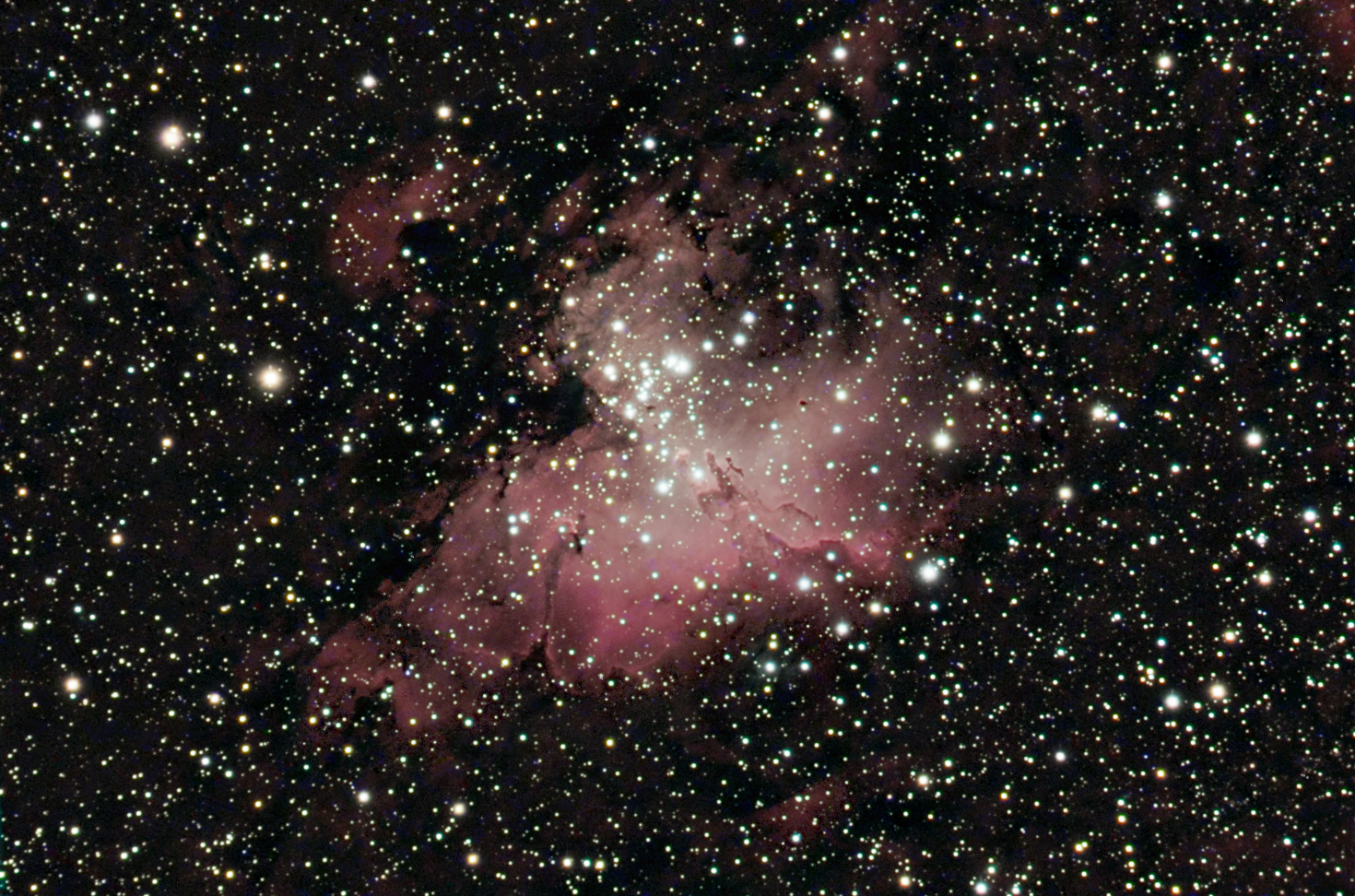
"The Eagle Nebula". Emission Nebula and Star Cluster in the Constellation Serpens Cauda
 |
The Eagle Nebula Messier 16 (M16) is a conspicuous region of active star formation, situated in Serpens Cauda. The star-forming nebula, a giant cloud of interstellar gas and dust, has already created a considerable cluster of young stars. The cluster is also referred to as NGC 6611, the nebula as IC 4703.6. Lying some 7,000 light years distant in the constellation Serpens, close to the borders to Scutum and Sagittarius, and in the next inner spiral arm of the Milky Way galaxy from us (the Sagittarius or Sagittarius-Carina Arm) a great cloud of interstellar gas and dust has entered a vivid process of star formation. Open star cluster M16 has formed from this great gaseous and dusty cloud, the diffuse Eagle Nebula IC 4703, which is now caused to shine by emission light, excited by the high-energy radiation of its massive hot, young stars. It is actually still in the process of forming new stars, this formation taking place near the dark "elephant trunks" which are well visible in photograph. A deeper insight in the star formation process could be obtained from the Hubble Space Telescope images, published in November 1995 (see "Pillars of Creation link below). This stellar swarm is only about 5.5 million years old with star formation still active in the Eagle Nebula. This results in the presence of very hot young stars of spectral type O6. At its distance of 7,000 light years, its angular diameter of 7 arc minutes corresponds to a linear extension of about 15 light years. The nebula extends much farther out, to a diameter of over 30', corresponding to a linear size of about 70x55 light years.
Hubble Space Telescope images of the star-forming region of M16: "The Pillars of Creation"
(Text info courtesy of SEDS).
Image Details: